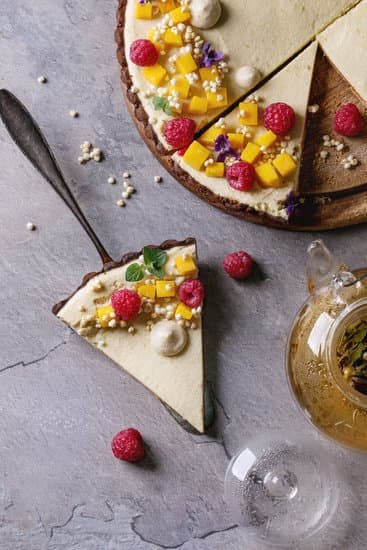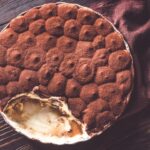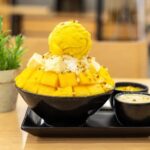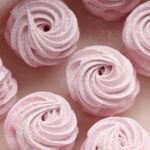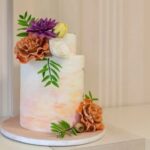Are you looking to elevate your cake decorating skills? One essential component to consider is the frosting. In this article, we will delve into the world of frosting and explore how to make it for cake decorating. Frosting plays a crucial role in adding flavor and aesthetics to a cake, making it a key element in creating visually appealing and delicious desserts.
When it comes to cake decorating, the type of frosting used can greatly impact the overall look and taste of the cake. From buttercream to whipped cream, cream cheese, and fondant, each type of frosting offers unique properties that cater to different decorative styles and flavor preferences. Understanding the differences between these types of frosting is essential in choosing the perfect one for your cake decorating needs.
To make delectable frosting, it’s important to have a comprehensive list of ingredients on hand such as butter, powdered sugar, vanilla extract, and food coloring. These basic ingredients serve as the foundation for creating a versatile frosting that can be tailored to suit various flavor profiles and design concepts. In the following sections, we’ll provide step-by-step instructions on how to combine these ingredients to create the perfect frosting for your cake decorating projects.
Types of Frosting
Buttercream Frosting
Buttercream frosting is a classic choice for cake decorating due to its smooth and creamy texture. It is made with butter, powdered sugar, and flavorings such as vanilla extract. Buttercream can be easily tinted with food coloring to achieve vibrant shades for decorating cakes. Its versatility allows for different consistencies suitable for piping intricate designs or spreading smoothly over a cake.
Whipped Cream Frosting
Whipped cream frosting is known for its light and airy texture, making it a popular choice for filling and topping cakes. This type of frosting is made with heavy cream, powdered sugar, and vanilla extract. It should be used immediately after preparation or kept refrigerated because it can lose its shape if left at room temperature for too long.
Cream Cheese Frosting
Cream cheese frosting has a tangy flavor that pairs well with various cake flavors such as carrot or red velvet. It is made with cream cheese, butter, powdered sugar, and vanilla extract. This type of frosting has a slightly softer consistency compared to buttercream, making it ideal for spreading on cakes or piping decorative borders.
Fondant
Fondant is a type of frosting that is rolled out into a thin sheet and draped over cakes to create a smooth canvas for elaborate decorations. It can also be sculpted into intricate shapes and figures to adorn cakes for special occasions. Fondant can be flavored and colored to complement the theme of the cake, providing endless creative possibilities for cake decorators.
Understanding the characteristics and uses of different types of frosting is essential for achieving desired results in cake decorating. Each type offers unique benefits and applications, allowing decorators to choose the most suitable option based on their specific design needs and taste preferences.
Whether it’s the richness of buttercream, the lightness of whipped cream, the tanginess of cream cheese, or the versatility of fondant, selecting the right type of frosting is crucial in bringing creative visions to life on beautifully decorated cakes.
Ingredients Needed
When it comes to making frosting for cake decorating, having the right ingredients is essential. Whether you prefer a classic buttercream or a light and airy whipped cream frosting, there are certain key components that every baker should have on hand. Here is a comprehensive list of ingredients needed to make frosting for cake decorating:
- Butter: Unsalted butter is the base for many types of frosting, providing richness and flavor.
- Powdered Sugar: Also known as confectioner’s sugar, this finely ground sugar is used to sweeten and thicken the frosting.
- Vanilla Extract: A dash of vanilla extract adds warmth and depth of flavor to the frosting.
- Food Coloring: Optional but essential for adding vibrant colors to your frosting for decorative purposes.
In addition to these basic ingredients, specific types of frosting may call for additional items such as cream cheese, cocoa powder, heavy cream, or fruit purees. Before you begin making your frosting, be sure to have all of these ingredients measured out and ready to go.
Keep in mind that the quality of your ingredients can greatly affect the final outcome of your frosting. Using high-quality butter and vanilla extract can make a noticeable difference in both taste and texture. Additionally, using gel food coloring instead of liquid can prevent your frosting from becoming overly runny.
By having these key ingredients on hand and being mindful of their quality, you can ensure that you are well-equipped to make delicious and visually appealing frostings for all your cake decorating needs. Now that all the necessary items are available let’s move onto following step-by-step instructions on how to make perfect cake decoration icing.
Step-by-Step Instructions
In order to make the perfect frosting for cake decorating, it is important to follow a step-by-step guide to ensure that the consistency and flavor are just right. Below are detailed instructions on how to make frosting from the creaming of butter and sugar to the incorporation of flavorings and colors:
1. Cream the Butter: Start by creaming the softened butter in a mixing bowl using an electric mixer or stand mixer. Make sure the butter is at room temperature for best results.
2. Add Powdered Sugar: Gradually add in the powdered sugar, about 1 cup at a time, while continuing to mix on low speed. This will help create a smooth and creamy base for your frosting.
3. Incorporate Flavorings: Once the butter and sugar are well combined, add in the vanilla extract or any other chosen flavorings such as almond extract or citrus zest. Mix until fully incorporated.
4. Adjust Consistency: At this point, assess the consistency of your frosting. If it is too thick, you can add a tablespoon of milk or cream to thin it out. On the contrary, if it is too thin, you can add more powdered sugar until you reach your desired consistency.
5. Add Food Coloring (optional): If you want to add color to your frosting, now is the time to incorporate food coloring. Gel food coloring works best as it won’t change the consistency of your frosting.
6. Beat Until Smooth: Once everything has been added, continue mixing on medium-high speed until the frosting is smooth and fluffy.
By following these step-by-step instructions on how to make frosting for cake decorating, you can achieve a delicious and visually appealing topping for your cakes that will impress anyone who takes a bite.
– Don’t rush through adding ingredients; doing so could lead to lumpy frosting.
– Use high-quality ingredients for better taste and texture.
– Always ensure that your mixing bowl and utensils are clean before starting as any leftover residue can affect the final product.
– Refrigerate your frosted cake if not serving immediately to prevent melting or smudging of designs.
– Experiment with different flavors and colors to find what suits your personal preference.
Tips and Tricks
Room Temperature Ingredients Matter
When making frosting for cake decorating, it’s important to ensure that all your ingredients are at room temperature. This includes the butter, cream cheese, and any other dairy products that you may be using. Room temperature ingredients blend together more easily and result in a smoother, creamier texture for your frosting.
Add Liquid Carefully
One of the most common mistakes when making frosting is adding too much liquid. Whether it’s milk, cream, or flavorings like vanilla extract, adding too much liquid can cause your frosting to become runny and difficult to work with. It’s best to add liquid a little at a time and mix thoroughly before deciding if more is needed.
Use the Right Tools
Having the right tools can make a big difference in achieving the perfect consistency and texture of frosting for cake decorating. Invest in a good quality stand mixer or hand mixer to ensure that your frosting is well whipped and free of lumps. Additionally, having a variety of piping tips and spatulas can help you achieve beautiful designs and finishes on your cakes.
By following these tips and tricks, you can ensure that your frosting is not only visually appealing but also delicious. Achieving the perfect consistency and texture will take some practice, but with these helpful guidelines, you’ll be well on your way to mastering the art of making frosting for cake decorating.
Decorative Techniques
Cake decorating is an art form that allows for endless creativity and expression. One of the key aspects of cake decorating is the decorative techniques used to apply frosting. Piping is one of the most popular and versatile ways to decorate a cake.
With the use of piping bags and various piping tips, intricate designs can be created, from simple borders to elaborate flowers and patterns. Spreading frosting evenly across the surface of the cake is another fundamental technique, as it provides a smooth canvas for further decoration.
Using different piping tips can drastically change the look of a cake. For example, a star tip can be used to create rosettes or shells, while a round tip can be used for writing or creating dots. It’s important to practice using different piping tips to understand how they can be utilized to achieve various textures and designs. Additionally, experimenting with offset spatulas or bench scrapers for spreading frosting can result in unique textures and finishes.
| Piping Tips | Designs Created |
|---|---|
| Star Tip | Rosettes or shells |
| Round Tip | Writing or creating dots |
Remember that practice makes perfect when it comes to decorative techniques for cake decorating. Don’t be afraid to experiment with different tools and methods to find what works best for you. Ultimately, developing your own personal style in cake decorating will come from trying out various decorative techniques until you find what resonates with your creative vision.
Flavor Variations
A great way to elevate the taste of your frosting for cake decorating is to explore different flavor variations. While traditional vanilla frosting is delicious, experimenting with flavors like chocolate, lemon, and strawberry can add an extra layer of excitement to your cakes.
When making chocolate frosting, you can simply add cocoa powder to your base frosting recipe. This will give it a rich and indulgent flavor that pairs beautifully with chocolate cake. For a zesty twist, consider adding lemon zest or lemon extract to your frosting for a bright and refreshing flavor profile. Additionally, incorporating pureed strawberries or strawberry extract into your frosting can create a delightful fruity flavor that complements vanilla or chocolate cakes perfectly.
Experimenting with flavor variations not only adds a unique touch to your cakes but also allows you to customize the taste to suit different preferences. It’s also a great way to showcase your creativity and skill in cake decorating by offering a variety of frosting flavors for your customers or guests.
| Flavor Variation | Key Ingredients |
|---|---|
| Chocolate | Cocoa powder, powdered sugar, butter, vanilla extract |
| Lemon | Lemon zest/extract, powdered sugar, butter, vanilla extract |
| Strawberry | Pureed strawberries/strawberry extract, powdered sugar, butter, vanilla extract |
By incorporating these delicious flavor variations into your frosting repertoire, you can take your cake decorating skills to the next level while delighting everyone’s taste buds.
Troubleshooting
In conclusion, mastering the art of making frosting for cake decorating can greatly enhance the appearance and taste of your cakes. By understanding the different types of frosting and their uses, as well as the essential ingredients needed, you can create beautiful and delectable treats for any occasion.
Following step-by-step instructions and utilizing helpful tips and tricks will ensure that your frosting has the perfect consistency and texture for decorating. Additionally, experimenting with flavor variations can add an extra layer of deliciousness to your creations.
When it comes to troubleshooting common issues with frosting, such as lumpy, runny, or overly sweet consistency, it’s important to know how to address these problems effectively. By identifying the root cause of each issue and applying the appropriate solutions – such as adjusting the amount of powdered sugar or adding more butter to fix a runny consistency – you can salvage your frosting and still achieve stunning results in cake decorating.
In essence, learning how to make frosting for cake decorating is a valuable skill that can elevate your baking repertoire. With practice and patience, you can master the art of creating beautiful designs with perfectly delicious frosting on all kinds of cakes, leaving a lasting impression on anyone who enjoys your creations.
Frequently Asked Questions
What Kind of Frosting Do You Use to Decorate a Cake?
The kind of frosting commonly used to decorate a cake is buttercream frosting. It’s versatile, easy to work with, and can be flavored and colored to suit any cake design or theme.
What Frosting Do Professionals Use for Cakes?
Professionals often use Swiss meringue buttercream for cakes. This type of frosting is smoother, less sweet, and has a more luxurious texture compared to regular buttercream.
How to Make the Perfect Cake Icing?
To make the perfect cake icing, start by creaming room temperature butter with powdered sugar until light and fluffy. Add vanilla extract and a pinch of salt for flavor. Adjust the consistency with milk or cream as needed, and beat until smooth and spreadable.

Welcome to our cake decorating blog! My name is Destiny Flores, and I am the proud owner of a cake decorating business named Cake Karma. Our mission is to provide delicious, beautiful cakes for all occasions. We specialize in creating custom cakes that are tailored specifically to each customer’s individual needs and tastes.

